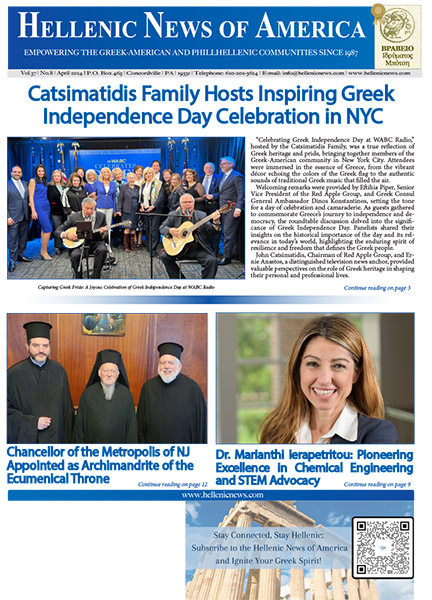November 10 is the feast of another modern day Saint of our Church, Arsenios of Cappadocia. I have posted something about this Saint in the past. He is the spiritual father of the much beloved Elder Paisios of blessed memory. Both Saint Arsenios, together with his spiritual child Elder Paisios, are buried at the Monastery of Saint John the Theologian in Souroti outside Thessaloniki. We are so blessed (I don’t hesitate to say this a second time) that we have relics of Saint Arsenios at the chapel here at Holy Cross.
——–
Memory of our Venerable Father ARSENIUS of CAPPADOCIA, the Wonderworker
Saint Arsenius was born about 1840 in Cappadocia, the land of the Church Fathers where, at the beginning of the twentieth century, Christianity still retained an amazing vitality in spite of Turkish oppression. At the end of his studies, Saint Arsenius became a monk and was sent back as priest to his native village, Farasa, to look after the education of abandoned children. He became known as Hadjiefendis, a title given to pilgrims, because he used to make the pilgrimage to the Holy Land on foot every ten years. All his life, this humble priest of God was the father and very soul of his poor, oppressed people. Besides instructing them in the elements of Hellenic culture, then forbidden by the Turks, Saint Arsenius was a living example of the high dignity of the Christian. Beyond every good word that he spoke, he was himself a presence of god, an unfailing well-spring of grace and of miraculous healings, not only for Greeks but also for Turks. He did not ask after the origin or religion of anyone who came trustingly to him, but sought only for the prayer that was appropriate to each case. If he did not find one in the Prayer book, he would take a Psalm, read a passage from the Gospel or even simply put the Gospel Book upon the sick person’s head. The miracles of Father Arsenius became so much a matter of course that there was no other doctor in Farasa. He was the physician of the souls and bodies of everyone there. People who could not get to see him would send him an article of clothing; he would read the appropriate prayer of write it on a piece of paper, and the cure would just as certainly happen. Sometimes the healing would be gradual, for the good of the people who needed to humble themselves and become aware, little by little, of God’s loving kindness.
Father Arsenius would never accept gifts made in thanks for benefits received. ‘Our faith is not for sale!’ he would say. He skillfully concealed his virtues by means of eccentricities or pretended outbursts of anger, so as to escape the praise of men and keep his soul in peace. When anyone expressed admiration for his power as a wonderworker, he would respond sharply, “So you think I’m a saint, do you? Well, I’m only a sinner worse than you. Don’t you see that I even lose my temper? The miracles you see are done by Christ. I do no more than lift my hands up and pray to Him.’ In fact, when Father Arsenius lifted up his hands in prayer to God for someone, his very soul seemed to be breaking, as though he were clasping Christ’s feet and would not let go until the Lord granted his request.
He lived in his narrow cell with its earthen floor, in fasting, vigils and unceasing prayer. Two days a week, and sometime more, he would remain shut in to give himself over to pure contemplation, wearing a sack and lying on ashes. People who came to ask his help on those days, finding the door shut, would take a little dust from the threshold and be certain to obtain a cure of their ailments. Father Arsenius was hard on himself but all love and compassion for his flock, especially for those who came to confess their sins. Rather than ‘penances’ and rebukes, he used charity to heal sinners. He often went to keep vigils in lonely chapels, preferring to walk barefoot rather than ride, in imitation of Christ who always went on foot, and out of compassion for the animals. Many a time the Saints appeared at the divine Liturgy ministering with him, and the faithful would wonder to see his countenance transfigured by the divine light.
Possessing as he did the grace of foreknowledge, Father Arsenius predicted the expulsion of the Greeks from Asia Minor well in advance, and he organized the departure of the inhabitants of Farasa. On 14 August 1924, when the expulsion order came, the old man, like a second Moses, put himself at the head of his flock for their 400-mile exodus on foot, through the midst of hostile Turks. Even so, being always united to God, he never ceased to extend the divine loving kindness towards Christians and Muslims without distinction. As he had already forewarned his faithful, he lived only forty days after their arrival on Greek soil. He was lying in hospital, when one of his relatives, catching sight of a louse, was just going to crush it when Father Arsenius exclaimed. ‘No, don’t kill the poor thing! Let it eat a bit of flesh too! Why should it be only for the worms?’ Then turning to his visitors, he said. ‘The soul, the soul, take care of it more than the flesh, which will return to the earth and be eaten by worms!’ This was his final sermon and testimony. Two days later, on 10 November 1924, he gave up his soul in peace to God, with the confidence of a good and faithful servant. He was eighty-three years of age. Ever since 1970, numerous apparitions and miracles associated with the precious relics of Saint Arsenius which rest in the Monastery of Souroti near Thessalonica, have given ample evidence of his close friendship with God. Veneration of Saint Arsenius was formally recognized by the Ecumenical Patriarchate in 1986.
-From The Synaxarion: The Lives of the Saints of the Orthodox Church, Volume 2: November, December by Hieromonk Makarios of Simonos Petra, translated from the French by Christopher Hookway, Holy Convent of The Annunciation of Our Lady Ormylia (Chalkidike), 1999.





